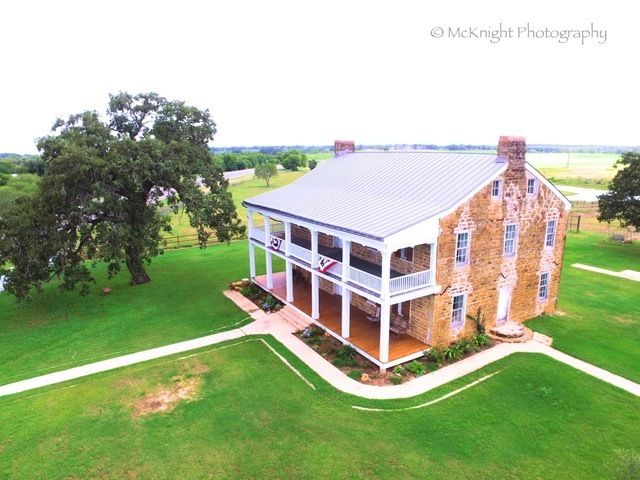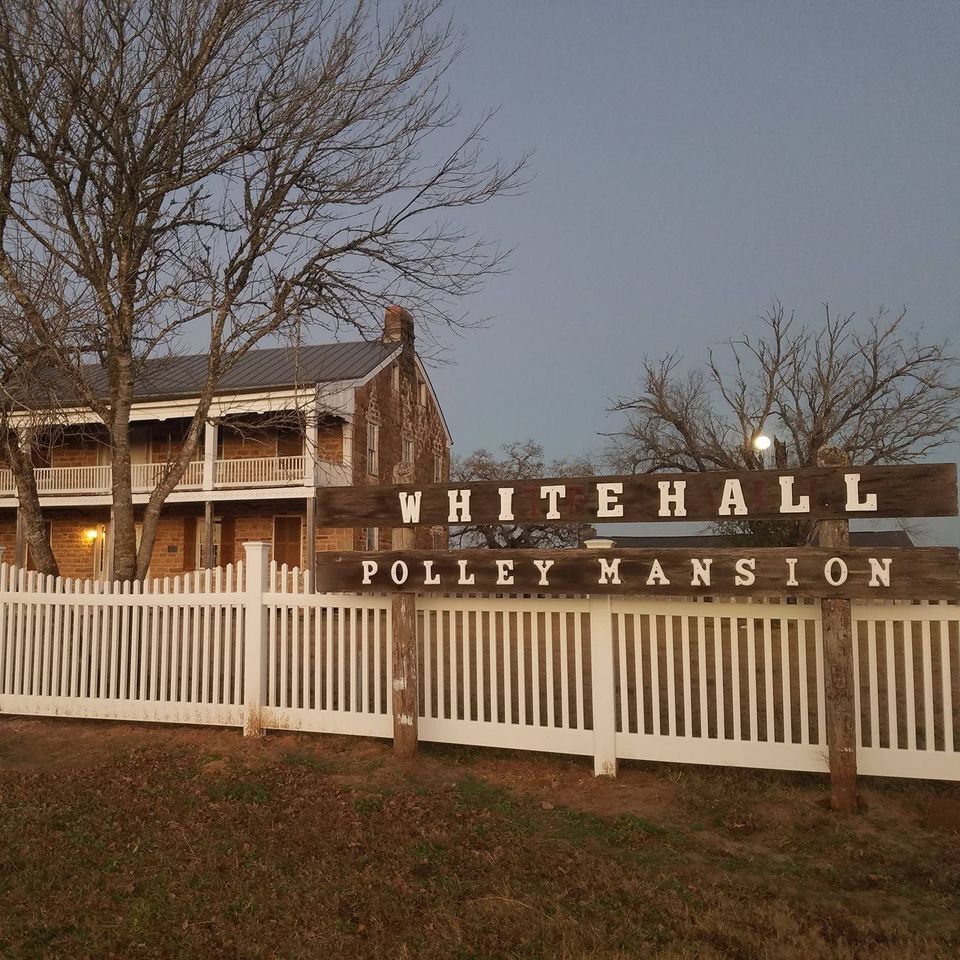Polley Mansion
Polley Mansion is located about 3 miles north of Sutherland Springs at 11432 FM 539, La Vernia, Texas 78121 in Wilson County.
Joseph H. Polley, the builder of this house, was born in Whitehall, New York, in 1794. He moved to Louisiana with his family when quite young, and served as a teamster in the army in the War of 1812. He was one of the first twenty-two immigrants to come to Stephen F. Austin's Colony in 1821. After living for a short time at San Felipe de Austin, Polley settled at Bell's Landing on the Brazos. In 1823 he married Mary Bailey, daughter of the celebrated Brit Bailey. It is worthy of note that the marriage ceremony was performed three times, first, by the local Alcalde, and second, by a visiting priest, in conformity with Mexican law. Thirty couples were married at the same time in the second ceremony. Just to make the knot secure a third ceremony was performed by a Protestant minister.
Polley was appointed by Stephen F. Austin the first sheriff of the colony. In the "Runaway Scrape", incident to Santa Anna's advance into central Texas during the revolution in 1836, Polley was detailed to escort the women and children out of danger, and he thus missed participating in the battle of San Jacinto.
In 1847 Polley moved from his home on the Brazos, which he had called "Whitehall" in honor of his birthplace. He selected a site for his new home on the small knoll overlooking Cibolo Creek about two miles north of old Sutherland Springs, in what was then Guadalupe County and is now Wilson County. At this time there were no other settlers in the vicinity, although shortly afterwards settlers came in fast. Polley built a "stake house" and lived in it four years while the mansion was being constructed.
Prior to the War between the States, he accumulated vast holding of land and cattle. In 1859 and 1860 he owned 150,000 head of cattle, more than any man in Texas with the exception of the King Ranch. His holding were scattered from Fort Bend County to Marble Falls, from Corpus Christi to Austin and south to the Rio Grande. In 1859 and 1860, 3,500 calves were branded in Guadalupe County alone. During the previous year, the same number had been branded in Bexar County. The total for one season was 10,000 head.
Depredation of the Mexicans alone caused a loss of 16,000 head from the Polley herds. The losses from Comanche depredations must have also been enormous. Polley's brand was "J-P".
So much for the owner -- Now to the house. Construction was started in 1848, and the house was four years in the building. The house is a most substantial appearing two story, practically square structure. It was built from hard stone quarried at a point about three miles distant, and transported in ox drawn wagons driven by slaves, to the building site. The wagons used the "Old Indian Crossing" over Cibolo Creek. The interior as well as the exterior walls are of solid stone and eighteen inches thick -- It was really built to last.
The house is heated by six open fire places. The woodwork was constructed from cypress timber hauled in ox drawn wagons from sawmills in the vicinity of Bandera. There are eight rooms in the building averaging in the size about 16 x 17 feet, and two large halls running the full length of the house, 30 x 12 feet in size. The rafters and supporting timbers are partly tied together with wooden pins, nails being used in some places. The rafters are 5 x 7 inches in actual measurement, and the joists are 2 x 12 inches, all from the finest cypress timber. Across the front of the house and extending the full width are porches, 10 x 51 feet, on both the lower and upper floors.
The windows, doors and window shutters were manufactured in New York, transported by water to Indianola, and thence by ox drawn wagon to the building site. The lovely rosewood piano with mother of pearl keys, the carpets and other household furniture were secured in a similar manner.
The Lime used to make mortar was burnt from mussel shells gathered in the bed of Cibolo Creek. One story told about the construction of the house is that the mason who contracted to build the chimneys stipulated that he was to receive a jug of whiskey each Saturday in addition to the cost of the work. On one Saturday for some reason Mr. Polley failed to supply the jug of whiskey. In retaliation the other mason partially clogged up one of the chimneys with debris such as chunks of mortar and stone. Of course, ever afterwards this particular chimney smoked when a fire was built. Many years later when the chimneys were inspected and cleaned the debris was discovered and removed, and from then on the chimney worked perfectly.
Rooms in the house were names "Green Room", "Pink Room", "Star Room", "Blue Room", the bridal chamber, and "Tan Room". My Polley called the house "Whitehall", after his old home on the Brazos, but for some reason the name didn't stand, for it is now referred to as the "Polley Mansion" or "Polley House".
The lawn was sodded with Bermuda grass, and the shade trees and shrubs were planted. Two of the old Post Oak trees still survive.


